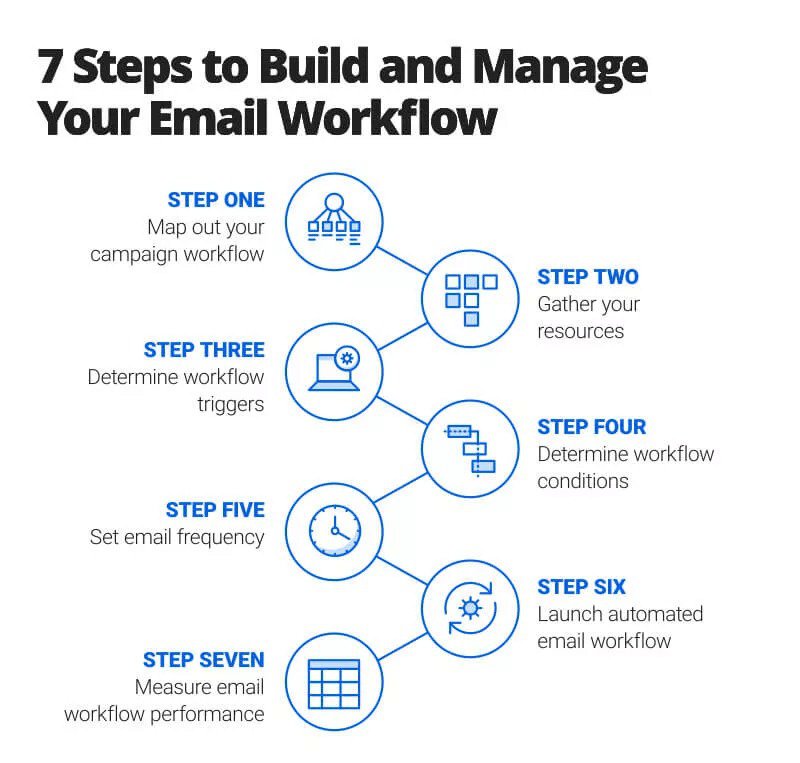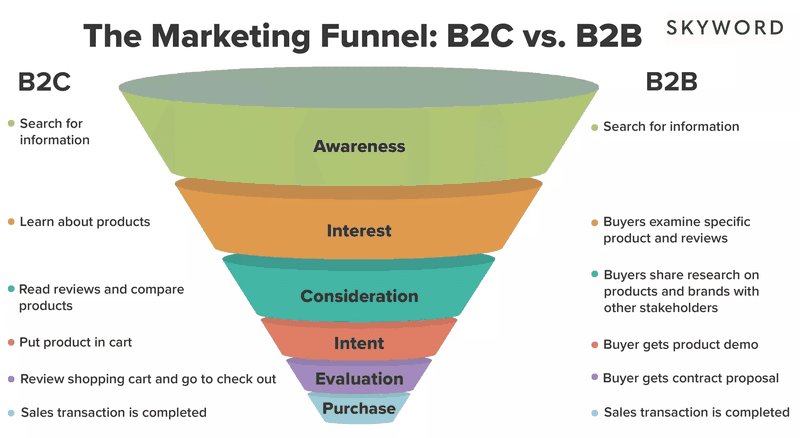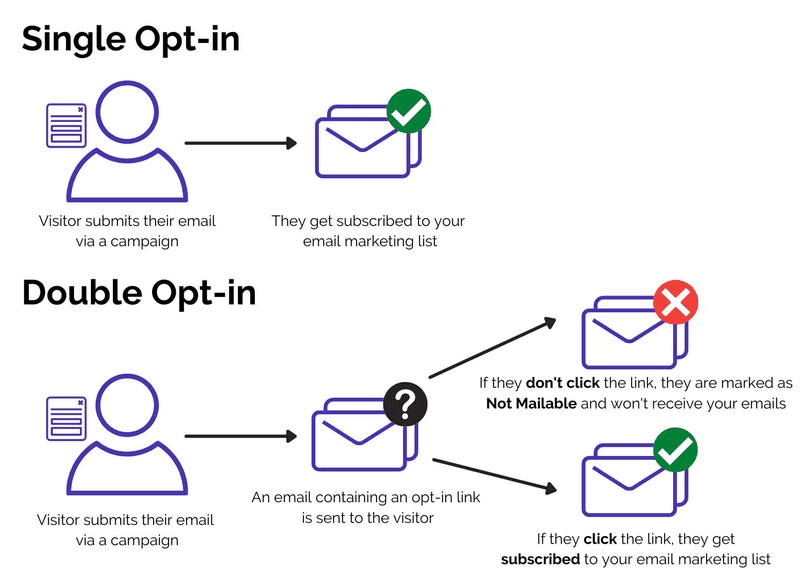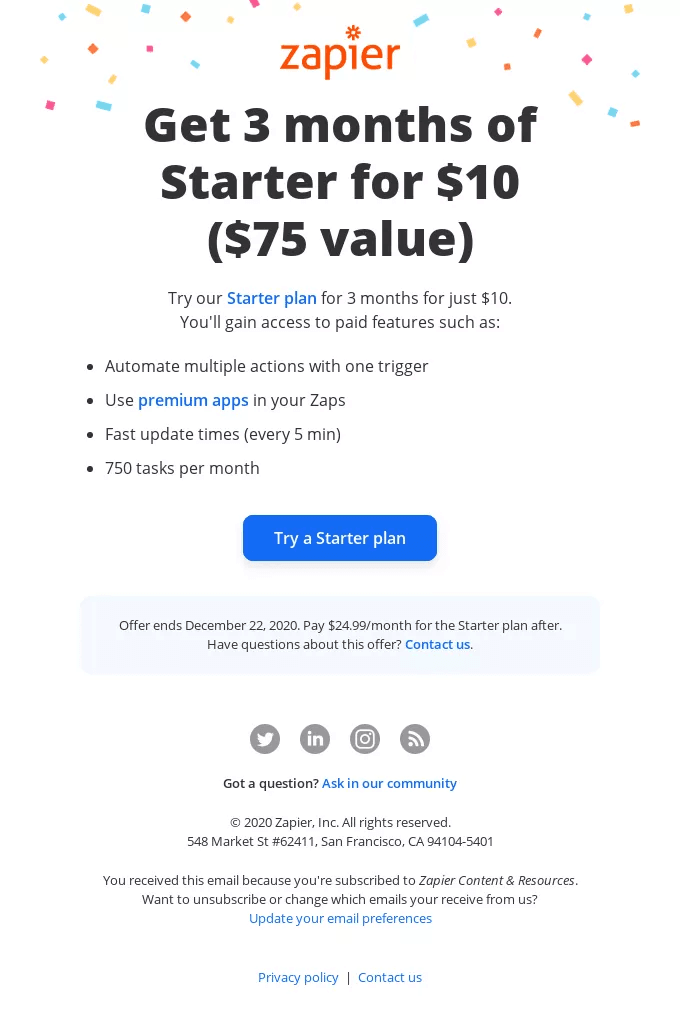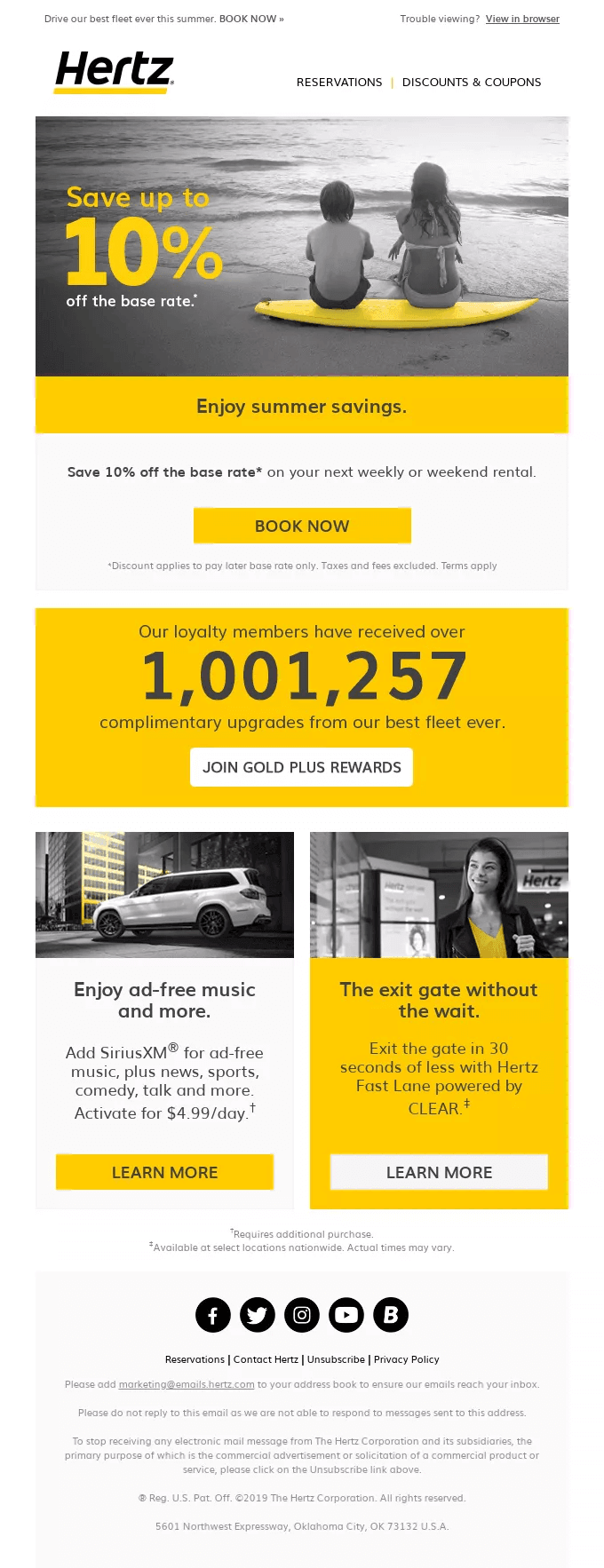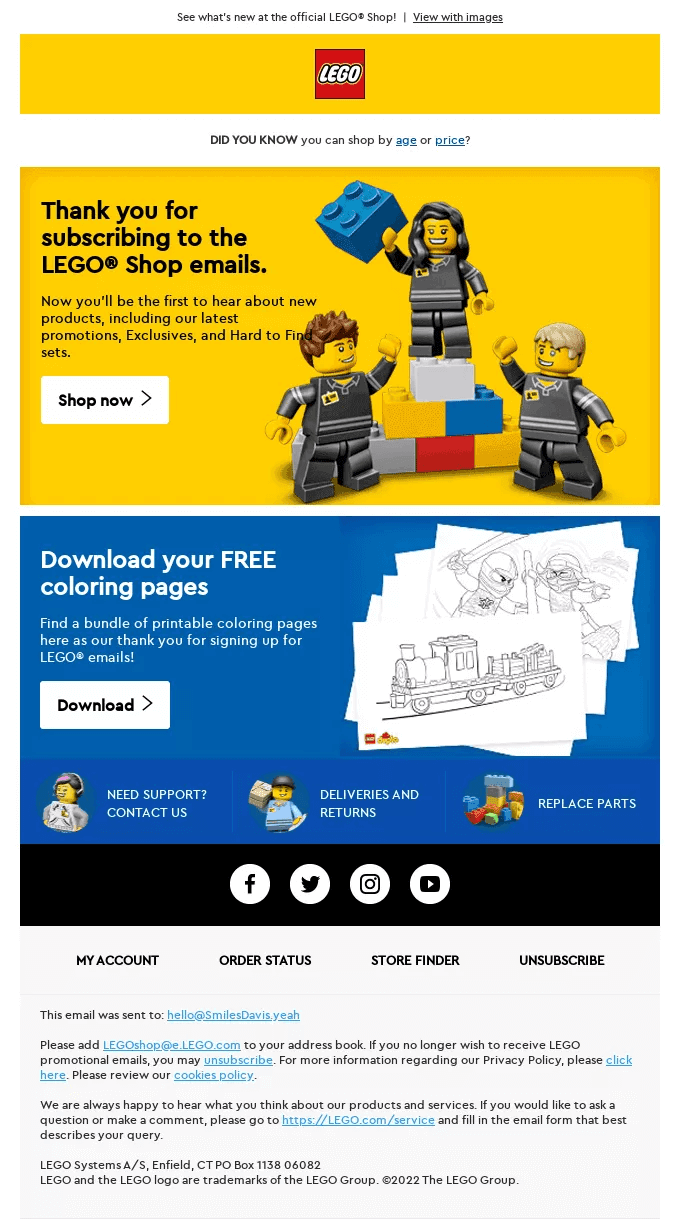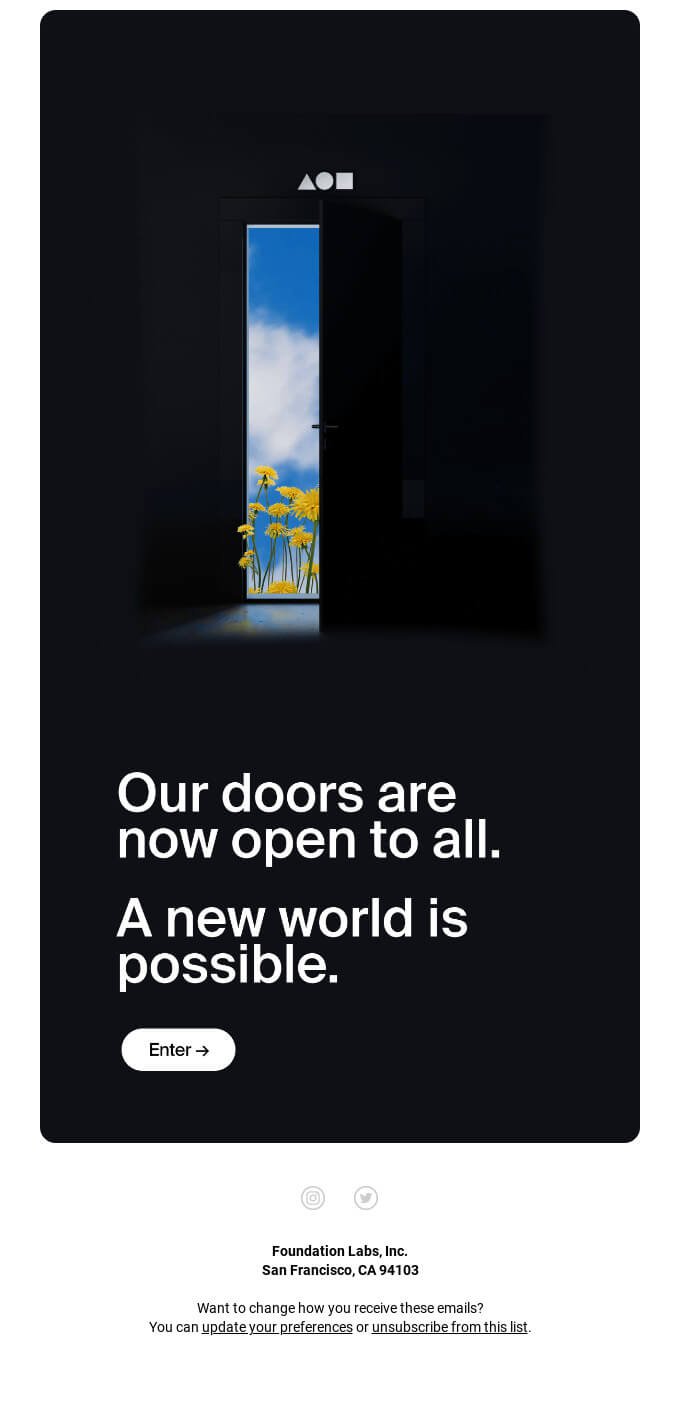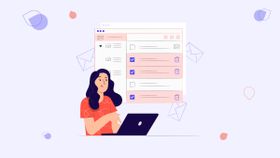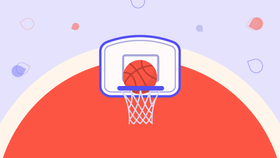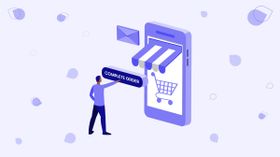15 Killer Tips For Email Welcome Series That Sell (+ Examples)
Want to create a welcome email series that wins new customers' loyalty and helps your business grow? Read here to find out more.
Updated November 5, 2024
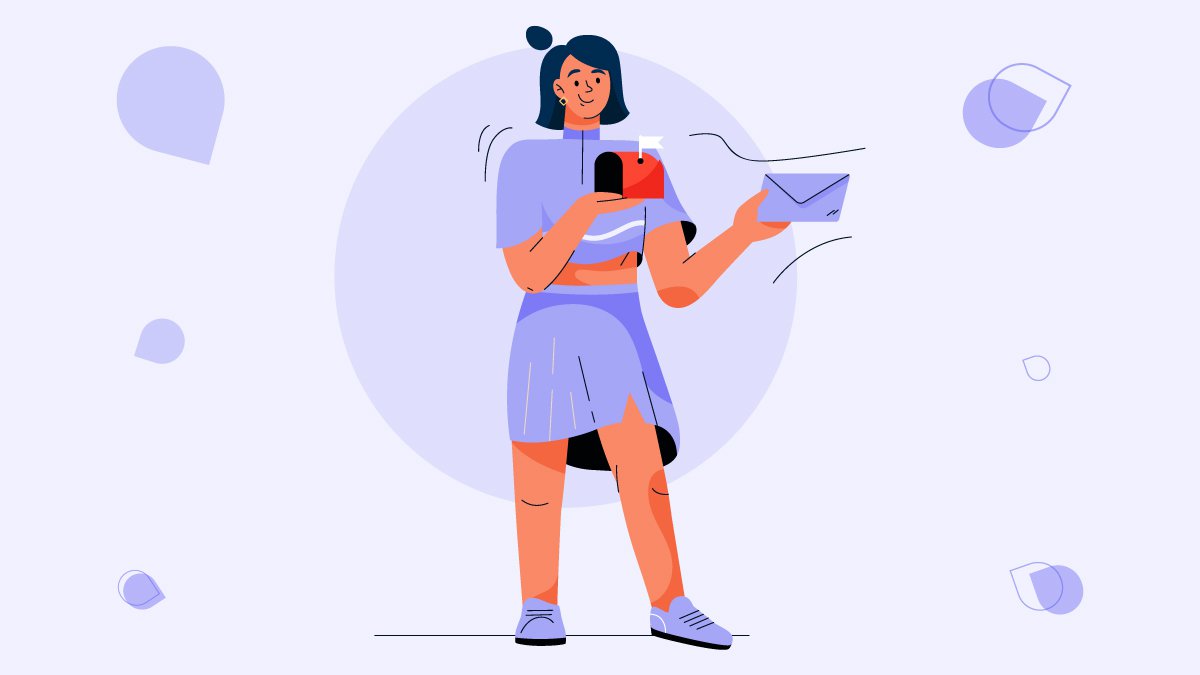
You’ve got a new subscriber to your contact list, congrats! Now it’s time to make them fall in love with your brand.
To create a lasting impression, it’s essential to introduce yourself and set the stage. Email marketing is a great solution to engage potential customers – and creating proper welcome series emails is a crucial first step to running campaigns that work.
In this article, wed’ll show you how to create an effective email welcome series that can help you charm new subscribers and boost your sales. Find out what to include, get inspo from some of the best email examples, and create an impressive campaign.
What is a welcome series, and why do you need one?
Welcome series are like virtual hugs you give to new subscribers and are super important at the beginning of your relationship! These onboarding communications are usually part of a longer string of email drips, and their main goal is to introduce your brand to new users.
Welcome email campaigns have a clickthrough rate four times higher than any other type of email – and read rates about 42% higher than other marketing emails too.
This first communication series sets the tone for your relationship with your potential customers, especially while your brand is already top-of-mind. It could be a single email or a series of emails.
Sending out these emails is a fantastic way to stay in constant contact, engage with your audience, and establish trust in this crucial first step of the customer journey.
Some of the main advantages of sending welcome email series include:
Creates rapport
Think of this email sequence as an icebreaker between you and your new subscribers. You're setting the stage for awareness, so take this opportunity to introduce yourself and set expectations.
Helps segment the audience
Including CTAs (call-to-action) or short surveys in your welcome email series gathers data that helps you better understand the needs of your new subscribers. As such, this boosts your click-through rates, and you’ll be better equipped to tailor and enhance your content to fit their needs.
Pro tip: segment your audience by customer engagement and send different emails for high-value customers to boost email performance.
It can be a brand differentiator
An effective welcome email series that showcases your brand's unique value proposition can help you stand out! You want each message in this series to set you apart from the competition and reinforce your brand image to help that first impression we're working on.
Feeding into your funnel
Many times, welcome series are part of an email funnel that starts with the introduction email and then goes on to educate the new subscribers on how to use the product better, what options they have, and how to navigate the different aspects of the website.
A discount/ promotional email is sometimes included as well, and sometimes, the series will also try to urge the user to upgrade to a paid/ higher plan or buy more products from the website.
The secret sauce: Automating your welcome flow
An automated welcome email series equals having a virtual assistant that sends out a series of four to six emails to your new subscribers over specific time periods. It helps you consistently engage with relevant messaging to your audience while avoiding a possible time delay when hitting "Send."
Furthermore, automating your welcome sequence enables you to build a compelling story around your brand and product and immerse your potential customer in it. Instead of feeling like bland, faceless communication, your entire flow will feel like a personal story that helps you build a relationship with your audience.
Automating your welcome email series also helps you avoid human error and saves you time. Sending manual emails is fine when you have ten or twenty new customers per month, but keeping up with manual emails will be increasingly more work as you scale.
Most email marketing platforms will allow you to create automated series easily, so you won't have to worry about this being complicated from a technical point of view.
What's more, almost every email marketing automation software comes with a flow builder and email templates, making it easy for you to create some of the most common types of sequences.
Manually sending communications isn’t the best strategy. They get sent out at a time that works for you, but you want the subscribers to receive your communications at a time that’s good for them.
An automated email series allows you to use specific periods in how you send your emails, ensures your new subscribers feel welcomed and valued, and increases the chances of their conversion to long-term customers.
Think of it this way: the time of writing a happy birthday message to someone you appreciate is just as important as the message itself. If you do it three months after the birthday, chances are it will be ignored. If your time of writing coincides with their actual birthday (give or take a couple of days), then you will be well-received.
How many emails should you have in a welcome series?
Although there is no general rule regarding how many individual emails a welcome email sequence should include, consider having three to five emails per sequence, usually spread over 30 days.
Some brands send a single welcome email, while others expand the series to more emails. This timeframe gives you enough opportunity to introduce your brand, build trust, establish social proof, and encourage further action from your new subscriber.
To determine the specific number of emails you should include in your welcome series, consider the following:
- The size of your business. The smaller your business is, the fewer emails you should send – although this is not set in stone.
- The purpose of your welcome series. If you want users to take action, for example, like upgrade to a paid subscription or place a second order in the first 30 days, you will likely have to create a more elaborate welcome series.
- Your overall messaging strategy. If your brand is all about keeping things short and concise, your onboarding emails should follow the same rule.
- How much and what types of content you want to distribute through your welcome emails.
Ultimately, data is King. So, if you’re not sure how many messages to include in your welcome series, test things out and see what yields better results in terms of performance: open rates, click-through rates, and conversion rates.
Types of welcome flows
There are different types of welcome flows that each have a unique purpose and approach, and you can always ask a trusted marketing agency for help.
Educational
Educational flows focus on teaching your new subscribers about your brand, products, and services. The messages generally include informative content about your industry, resources, or internal links to your website. Using these tools establishes your value as a resource and builds trust with your subscribers.
Offer-based
Offer-based flows focus on offering awesome incentives to your subscribers, such as free trials, promotions, or discount codes. These communications encourage subscribers to take action and engage with your brand. This is a pretty common email marketing strategy to convert your new contacts into paying customers.
Product-focused
Product-focused flows are a fun way to give a tour of your newest and most popular products or services and can include case studies, user guides, or a recorded demo.
These messages go out to specific subscribers based on their previous preferences or actions, and now you get a chance to show them what sets your brand apart!
Information-gathering
This series email flow example lets you feel like Sherlock Holmes. These email journeys are designed to collect as much info about your subscribers as possible.
The collected data can include preferences, interests, or demographics by sending out interactive content like surveys or quizzes. You can use this information in the future for personalized communications and to improve your marketing efforts.
What to include in your automated welcome series
Planning your welcome sequences helps you make sure your message is crystal clear. Think of your welcome plan as a map for you to follow.
To create a perfect path, determine your desired welcome flow, then decide the timing and frequency of your future emails. Once you have all these bits in place, you can start writing compelling messages.
This may sound overwhelming, but there are many marketing tools to help you through this process.
Here’s a standard email template of a welcome series, but feel free to change it up to fit your own email strategy!
First email
This introductory message is the first communication the subscriber receives from you, so make it count. The email is automatically sent when they sign up, so strike while the iron is hot and their interest is at its peak!
Address the subscriber by name to establish a personal connection, thank them for signing up for your email list or newsletter, and provide a short introduction to your brand. Keep the tone light, welcoming, and simple.
If any incentives were offered in return for signing up, this is the point to follow through on that trade.
Invitation to connect
Stay connected! You want to make sure new subscribers can easily find you in the future whenever they need to do so.
Two to three days after sending out your initial welcome email, invite them to find you on social media. They probably won’t follow you for “free” - offer a coupon code or an incentive to remind them you’re worth their time (and space on their news feed).
Getting more acquainted
By now, your email subscribers know about you, it’s your turn to get to know them!
This message is your opportunity to send out a survey or a quiz so subscribers can tell you a bit about themselves. Let them know that you’re planning to use the information to make sure that each communication they receive is full of personalized content and offers.
Pro tip: want to improve your email flows? Talk to one our vetted drip marketing experts.
Best practices for your welcome emails
When someone signs up to your list, the content they receive first sets the tone of the relationship (and for the email sequence itself).
Ensure you create welcoming and engaging content, but more importantly, confirm you have multiple welcome email series ready for different audiences. Your goal here is to create a trusting relationship and boost conversion rates.
Want to make sure your email marketing is on point? Check out our Ultimate Guide to eCommerce Email Marketing or The Top eCommerce Email Marketing Agencies to Hire in 2024.
Use your welcome series as a funnel
Using your welcome sequences as an email funnel is a useful process for guiding your customers through the different stages of awareness. The funnel guides your new subscribers through a journey while maintaining your connection with them.
Here’s an example of how a welcome series funnel could look like:
Introduce the problem
Kick off your welcome series by addressing the customer's problems head-on. Make sure you frame the pain point in a way that resonates with the specific audience of the email series.
Explain the reason behind the problem
Try to explain to the customer why this problem exists. This should be easy, it’s why you started! Addressing the problem is a great way for you to build up your product as their solution.
Introduce your product that solves the problem
Help your customer become solution aware and highlight the key benefits of your product and how it successfully combats the problems. Try using storytelling techniques to get them excited about you using your product.
Sell
Since we already have our audience segmented, this part should go smoothly. Use specific language for the user segment, and let them know your UVP (unique value proposition). Here you can also include some customer testimonials to boost your social proof and to show your product is legitimate. Try adding a discount code or some other type of limited offer at this stage.
Aim not to overwhelm your customer by being too “sales-y” – you can send this out in two separate communications.
Pro tip: want to improve your email copy? You need a top-notch copywriter, check out our list of the top email marketers.
Create enticing subject lines
Since the subject line is the first thing your subscriber will see, keeping things on brand and consistent with your tone and personality is important. Ensure they know what to expect when they open the email, then meet them halfway.
Make sure your copy matches your brand
Just like your subject lines, your copy should match your brand's personality and tone. Make sure to use language that appeals to your segmented audience's personalities.
Invest in good design
The email design should match the rest of the email series vibe and your overall brand identity. That means using the same custom font in your emails as on your site. Try to keep your email design simple to avoid overwhelming your audience – the smoother the design is, the easier it will be for your reader to consume your content.
Things to include:
- An engaging image
- UGC - pictures of your customers enjoying your product
- A personal story of your founders
Remember to add a CTA
Your email should have a clear CTA to guide your customers to the end goal. It can be downloading a resource, a link to your socials, or a free trial. The call to action should be relevant to the audience of the email series since each subscriber has different interests and objectives.
For instance, if your goal is to improve your eCommerce business, push them through the stages of awareness, increase click-through rates, or maybe have them learn more about your brand.
Avoid using generic language such as “click here,” try to use specific language relevant to the audience, and place the CTA button in a prominent location.
Make your value proposition clear
Your value proposition is what makes your product stand out. Don’t be afraid to let your customers know what that is – make it a clear, concise, and compelling statement.
Include a special offer
Everyone loves a good deal! A special offer entices your subscribers to explore your brand further and maybe even make a purchase. Don’t worry if they don’t follow through, they’ll still be engaged with your brand, and keep an eye out for your next deal.
Use a double opt-in
A double opt-in is a confirmation email sent to your new subscribers asking them to confirm their email address and subscription by clicking a link. It’s a way to ensure your emails aren’t going to spam and that your email list only includes people who want to hear from you.
Find the right timing
Like most marketing, with your email welcome series, you want to consider the time of day, week, and frequency you’ll send out the emails. You can use data and analytics to track engagement and determine your timing properly.
Welcome series email examples
We've covered the importance of segmenting your mailing list to ensure you don't send out a copy and paste of the same email template to every person. You need to focus on creating relevant emails for each segment, with personalized promo codes, exclusive offers, and the personal story of your brand and/or founders.
Need some inspiration? Take a look at some welcome subject line ideas and email examples we gathered for you from different industries.
Monday.com
Subject Line: Welcome to monday.com 👋
Features:
- A prominent CTA…twice
- Brief product benefits overview
- First name personalization
Why we like it: if “classic, yet effective welcome email” had a definition, Monday’s would be it. From the overall email style to the email subject line, this welcome piece does everything it’s meant to do: sets a professional (yet friendly) tone, guides the user through the main resources, and spells out the main value proposition of the product.
Zapier
Subject Line: Get 3 months of our Starter plan for $10
Features:
- “Shop now” CTA
- Simple and not-overwhelming design
- Product highlights in a nutshell
- Offers a tempting discount
Why we like it: This welcome email wastes no time – they make an offer, right away. In this case, it works very well: Zapier offers plenty of things for free, so it’s natural they’ll want to incentivize you to upgrade to a paid plan as soon as possible. Not only will they give you a great discount, but they also list down the why you should do this. Simple, concise, and to the point!B2C - Business to Consumer
B2C welcome emails leave a bit more room for creativity, but if you’re lost for ideas, here are some examples you could use:
Hertz
Subject Line:🚦H️it the summer road with Hertz & save 10% off the base rate
Features:
- On-brand colors
- Multiple CTA’s
- Offers a discount for different products
Why we like it: Design-wise, this email is flawlessly on brand. Plus, it evokes vacation vibes, which is precisely what it needs to do. The offer is enticing, it clearly states why you should take it, and, to top it all off, the email includes a powerful social proof too. A picture-perfect welcome email!
Chipotle
Subject Line: Bonus points are the new thank you
Features:
- A “Feel Good” message
- Good use of brand colors
- Clear CTA for account access
Why we like it: Chipotle made what seems like a basic discount/ promo email feel like a friendly nod. The “you made our day” part sets the tone for the relationship Chipotle aims to have with their customers – it’s all about them, the customers, and that makes them feel great about buying from Chipotle.
Lego
Subject Line: Thank You for Subscribing
Features:
- A “Did you know?” CTA
- Great use of brand colors
- Sets expectations for future emails
Why we like it: This welcome email is perfectly on brand without beating around the bush. No complicated building schemes here: just a simple message and a cute giveaway (the coloring pages).
Adobe
Subject Line: Creative Cloud member benefits: Take your creativity to go
Features:
- Highlights key features
- Promotes multiple products
- Simple design to stay with Adobe's aesthetic
- Two CTA’s
Why we like it: Again, simplicity wins the day. Adobe pushes its welcome email with a clean message: being a member has value. The quick community invite at the end of the email is also a great way to increase the channels their customers communicate with them – all by making them feel part of a “tribe”.
The New York Times
Subject Line: Miss nothing. Subscribe for $1 a week. Ends soon
Features:
- Fun and creative graphics
- Offers an enticing discount
- Subtle yet powerful product description
Why we like it: The copy on this one is flawless. “For news and ideas that stay with you” is a flawlessly concise sentence that encapsulates what The New York Times aims to be all about: good journalism. Plus, the $1/ week offer is also more than enticing, especially when placed against the unique selling proposition.
Heatonist
Subject line: Welcome, spice lover 🔥🙌🔥
Features:
- Fun graphics and tone of voice
- Relevant emojis in subject line
- Creates a warm, welcoming impression
Why we like it: This is one hot welcome message! The meme at the beginning, the overall tone of voice perfectly adapted to the audience, the storytelling, the product recommendations at the end result in a truly great welcome series to inspire eCommerce brands.
The North Face
Subject line: Hey there! It’s nice to meet you. Features:
- Messaging and concept are perfectly on point
- Product recommendations and educational content
- Social proof
Why we like it: This welcome message is building a desire for adventure. The short snippet at the beginning, the soft yet compelling social proof ("the world's best athletes"), and the product recommendations all blend to create a welcome series worthy of such a big name in the fitness industry.
Glossier
Subject line: Welcome to Glossier. Here's 10% off, just for you.
Features:
- Promotional code
- Engaging graphics
- Fun puns
Why we like it: Who can resist an elegant pun? That "Take Ten" got the copywriting geeks in us so excited! Plus, the fun colors, the quick yet effective messaging, and the storytelling-focused copy are sure to get people looking for their credit card details.
Setapp
Subject line: Your Setapp membership starts now ✨ Features:
- Clean, aired-out design
- Simple, quick copy
- Product tutorial
Why we like it: Sometimes, less really is more. This welcome email manages to feel on brand, stay super clean, and deliver a crisp, valuable message. No fuss, no frills – just what people need when they sign up for a new product.
Foundation
Subject line: Our doors are now open to all ☁️ → Features:
- Hyper minimalism
- Entices curiosity
- Leads customers to the website
Why we like it: Curiosity can be a powerful emotion, and few other welcome series manage to make someone feel intrigued (even if it's just been minutes since they left your website or social profiles).
Mailchimp
Subject line: Discover more content from Mailchimp & Co Features:
- On-brand, vibrant design
- Perfect connection to content marketing
- Clear, enticing CTA
Why we like it: This welcome series is a lesson on building a bridge between a piece of content and your email campaign. Note the quick nod to the piece of content the user likely read before signing up, the recommendations for similar types of content, and the quick CTA at the end.
These elements also make this the perfect email for different stages of awareness, as well - from those who are just here to enjoy your content to those ready to jump on the train and buy from you.
Welcome series, done right: A fine balance
Crafting a successful series of emails means you have to understand what your subscribers want and then focus on delivering that message in the best way possible.
Plan your series based on your industry and your offer, and test it out to find the right amount of emails to send. Remember, your goal is to keep the content informative and personal and let the subscribers get to know you, too!
Know your audience and keep your subject lines, copy, and graphics on-brand. Segmentation is key to guaranteeing that your subscribers are receiving those tailored communications. Stick to the funnel and focus on turning that new email list into long-term paying customers!
Need help with your email marketing strategy, or just want an expert pair of eyes? Check out the top email marketing agencies to connect with an email expert who can set you up for success. Let’s take your marketing and business to the next level!
FAQs
What is an example of a welcome series flow?
Most welcome series flow examples include three email campaigns sent to a new subscriber: (1) The welcome message is sent right after signing up, (2) the invitation to connect is sent after a couple of days, and (3) getting acquainted send a few days after the second email.
What is the objective of the welcome series?
A welcome series is sent to new subscribers after signing up for your email list. This is your chance to say hello, show gratitude, and/or make an offer. Look at this email series as an opportunity to stay in constant contact, create a positive impression, provide valuable pieces of content, and establish trust with your audience.
Why is a welcome email series important?
A successful welcome email series helps your brand create a strong first impression on new subscribers. Sending a message right after the opt-in helps the subscriber stay excited about your brand.
This series can be an opportunity to introduce yourself, show how you can help, showcase your product and any social proof you have, and maybe even make a sale (although, as a general rule of thumb, you shouldn’t necessarily push this right away).
What is an onboarding series?
An onboarding series is your chance to make a great first impression and an essential step in the process of persuading potential customers that your product or service has value. Sharing information about your brand and educating subscribers allows for a strong first impression and easy flow through the rest of the buyer funnel.
How do you write a welcome series email?
In your welcome email series, you want to personally address the new subscriber, thank them for signing up for your product or newsletter, welcome them to your brand or business, and provide them with a short and sweet introduction to your brand, what they should expect from you, and invite them to connect via different channels (like socials, a monthly newsletter, etc.).
What is a welcome workflow?
A welcome workflow is a series of communications that are triggered when you receive a new subscriber to your email list. It’s the first form of communication they’re receiving from you so create a lasting impression and it's one of the most powerful email automations you could set up. Take this time to educate them on your brand’s product or service.
What is an email funnel?
An email funnel is the sequence of individual emails you send to nurture your contacts, build relationships with them, and turn them into paying customers. In other words, this type of communication can take your audience from "Problem-Aware" (they know they have a problem) to "Solution Aware" (they know what are the potential solutions to their problems). This couldinclude a welcome series, onboarding series, educational content, promotional campaigns, and more.

